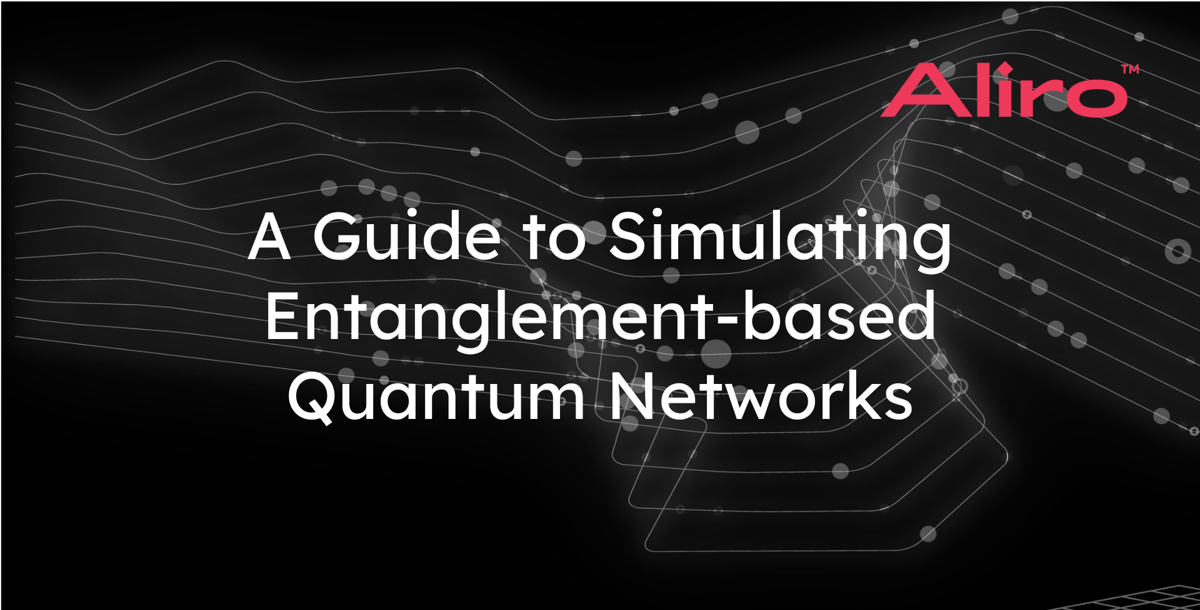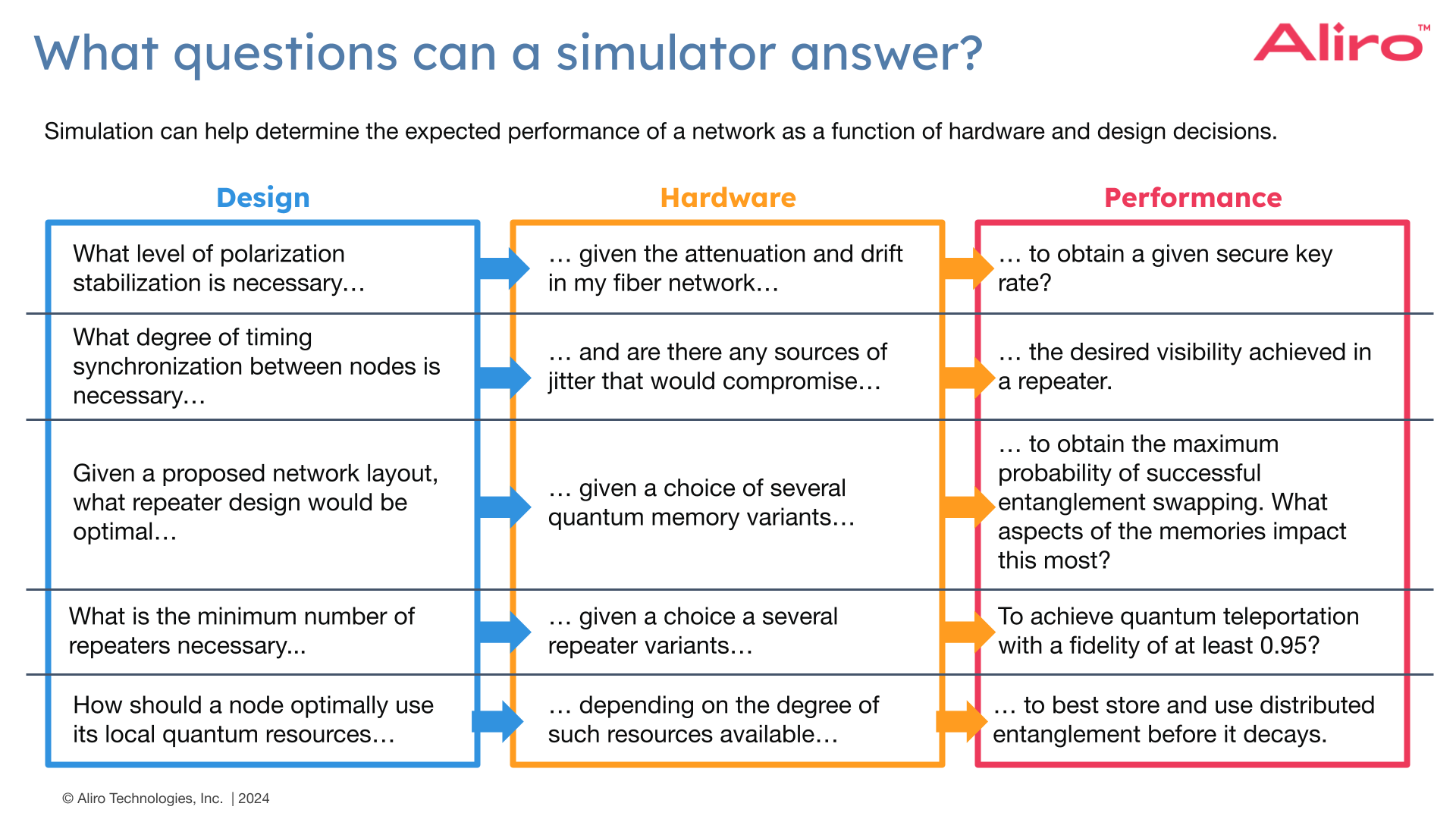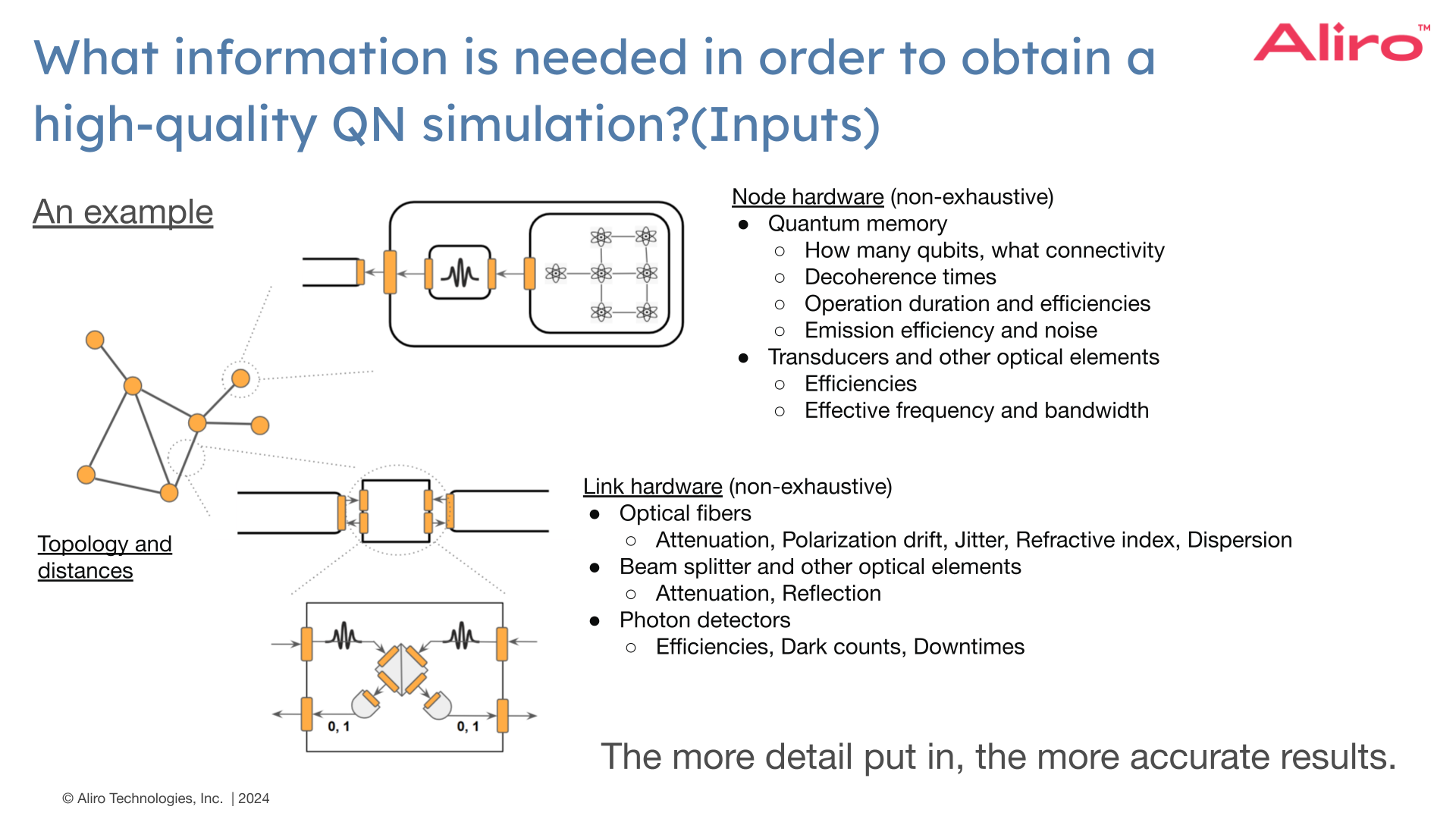
Designing and building entanglement-based quantum networks requires meticulous planning and foresight. Network simulation is a highly useful tool for informing the design and implementation of quantum networks, at any stage of the process. You can ensure the success of your network simulations by focusing on identifying what is needed to begin simulations, preparing for the simulation, and understanding the outputs you can expect from the simulation.
When to Simulate
Simulating your quantum network early on allows for exploring design options and understanding their implications without the risk and cost associated with physical deployment. At this early stage, the fundamental structure of the network has been identified, but the specifics are still flexible enough to be influenced by simulation insights. For example, by simulating different hardware choices and configurations, network designers and engineers can identify the optimal components and layouts for meeting their performance and security requirements. This proactive approach ensures that the network design is robust and efficient, reducing the likelihood of costly revisions later in the development process.

Gathering Essential Information for Simulation
Effective simulation of an entanglement-based network requires an understanding of the network’s intended structure and function. The more detailed the information, the more accurate and useful the simulation results will be.

In particular you’ll need to have information on:
- Functional requirements. Outline what the network is intended to do. This could range from secure key generation and distribution to supporting distributed quantum computing. Each use case will have different performance metrics and requirements, which influence the simulation parameters.
- Network topology and hardware. Define the network topology – the layout of nodes and their connections. Identify the types of hardware at each node and the characteristics of the links connecting them. For example, if the network uses optical fibers, understand their attenuation, polarization drift, and any other physical characteristics that might affect performance. This data directly impacts how accurately your simulation will model the network.
- Environmental factors. Consider the environmental conditions that could impact network performance. For instance, temperature variations can affect fiber optics' performance, so these should be included in the simulation parameters if relevant. Some environmental factors will vary throughout the day or may change seasonally.
- Existing knowledge and gaps. Assess what is already known about the network and what needs further exploration through simulation. This helps to set realistic, focused objectives for the simulation.
Some questions that simulation can help to answer are:
Performance metrics. What level of polarization stabilization is necessary at specific nodes to achieve a desired secure key rate, given known fiber attenuation?
Hardware configuration. What are the optimal repeater layouts and quantum memory types for maximizing entanglement swapping efficiency?
Protocol design. How should the network protocol be designed to store and use distributed entanglements most efficiently, minimizing qubit loss?
Understanding and Utilizing Results
The outputs of network simulations provide critical insights into the network’s potential performance and inform design decisions. These outputs generally include performance metrics such as rates of secure key distribution and the fidelity of entanglement, both of which are essential for assessing the network’s effectiveness. Some helpful simulation outputs include:
- Performance metrics. Simulations can reveal the expected rate of secure key distribution and the average fidelity of entangled states.
- Detailed event logs. Simulations can generate detailed logs of events within the network, such as the arrival times of photons at various nodes. This data helps identify potential bottlenecks and inefficiencies in the network design.
- Statistical averages. Running simulations multiple times provides statistical averages, accounting for variability and uncertainties in network behavior. This helps with understanding the network's performance under different conditions and configurations.
- Optimization insights. Simulation outputs can be used to optimize network performance. By iterating over various configurations and parameters, network designers and engineers can identify the combination that offers the best performance, while balancing factors such as rate and fidelity.
Implementing Simulation Insights
The results of quantum network simulation can be used in refining the network design, selecting hardware components, adjusting the network topology, or modifying protocols to improve performance. The iterative nature of simulation also allows for continuous improvement and can aid in preparing for changes to an existing entanglement-based quantum etwork, such as adding new components or implementing new protocols.
Simulation bridges the gap between theoretical designs and practical implementations of entanglement-based quantum networks, offering a safe and cost-effective environment to experiment and innovate. Simulation empowers network designers and engineers to anticipate potential issues, explore configurations, and optimize performance without the risks associated with real-world trials. By leveraging the insights gained through simulation, we can accelerate the implementation process and build more resilient networks.
If you’re interested in learning more about simulation of Quantum Networks, we recommend these on-demand webinars:
- Achieving Optimal Performance: Your Guide to Designing Quantum Networks
- Quantum Network Simulator Demo
- Design, Visualize, and Troubleshoot Quantum Networks
